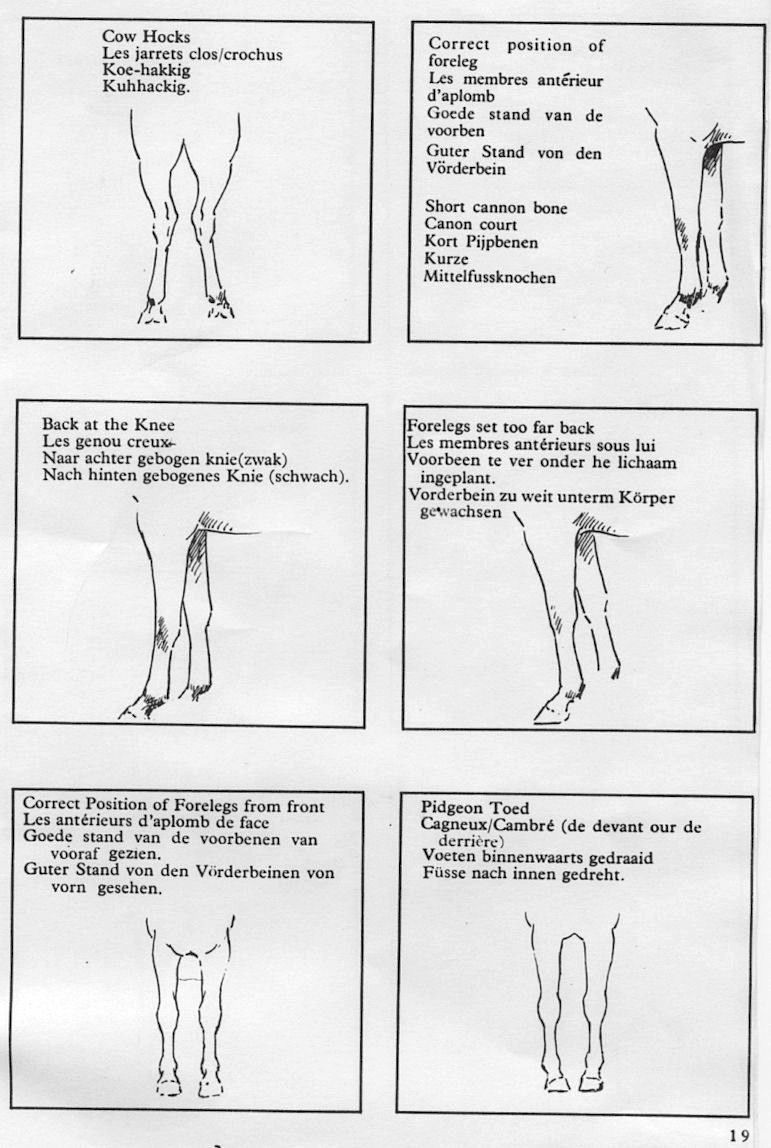Welsh Cobs and Section B Welsh Ponies



Visit us on Facebook
Welsh Pony and Welsh Cob Breed Standard, Description, Show Rules for Judging











Let's start with the head. The head should be short and well balance. Many feel the face should be dished, but this is NOT a
requirement, just a preference.
The ears should not be horselike, good Welsh ears are smaller and open, not long and narrow. The eye should be of
good size and wide, not small and piglike. The jaw should be prominent leading into a nicely set, open throatlatch. Nostrils should show an ability for
good airflow.




There should be acceptable room in the chest to allow for some distance between the front legs, not too narrow, not too wide.
The same
with the hind end. The back must not be too long, a long back often shows up with a lack of body depth and weak loin.A lack of body depth often
shows up in a pony which has too much horse genectics in the pedigree below the sixteenth generation.


Most breeders have short term goals. Their breeding program is to produce a foal better than the sire or dam, one for a fad or market. It ends there, and compares to a cross-breeding program. For example, in one generation a breeder can produce, by breeding opposite qualities, a show winner with 'quality and refinement'. But then, in each passing generation, the animals lose the very traits that made them unique.
Every breed registry is subject to political pressure and conflicting interests. Talk to breeders and they will tell you their concerns about the future of the breed. These are not theoretical musings, these things are happening now. Every breed registry is feeling the pressures of change.
On the other hand, each breed has legacy breeders, those that are dedicated to a breed's original standard and will not change. There are certain things that legacy breeders do, things that are not mystical or secrets handed down from past generations. They are sound breeding principles that are common knowledge, but ignored by most breeders. They are principles that are shoved aside through politics and fads, economics and personal whims.
Legacy breeders breed by the standard. That seems too simple to be true. They breed to good qualities, not away from bad. There are no surprises in a legacy breederís barn, he continues to breed good qualities to good qualities to the point where his foal crop is predictable. At that point even his culls are better quality and truer to breed type than the best of other breeders. Legacy breeders study pedigrees, family lines and individual ponies. They know family lines and the traits passed on by those lines and where they came from, the genetics that carry on. The genetics that do not change the breed. The genetics that breed true to the standard.
Every registered breed has itís own breed standard, and to the legacy breeder this standard is revered. Legacy breeders appreciate the breedís unique character, and are dedicated to preserving these qualities. It would never occur to a legacy breeder to "improve" the breed. Legacy breeders believe in the breed and will not change for any judge, for any market trend, for any amount of money. . . .
YOU too can be a legacy breeder.
Preservation breeding is an attempt by many animal breeders to preserve bloodlines of animals, either of a rare breed, or of rare pedigrees within a breed. One purpose of preservation breeding is to protect genetic diversity within a species, another is to preserve valuable genetic traits that may not be popular or in fashion in the present, but may be of great value in the future.
The
observable phenomenon of hybrid vigor stands in contrast to the notion of breed purity.
All Rights Reserved